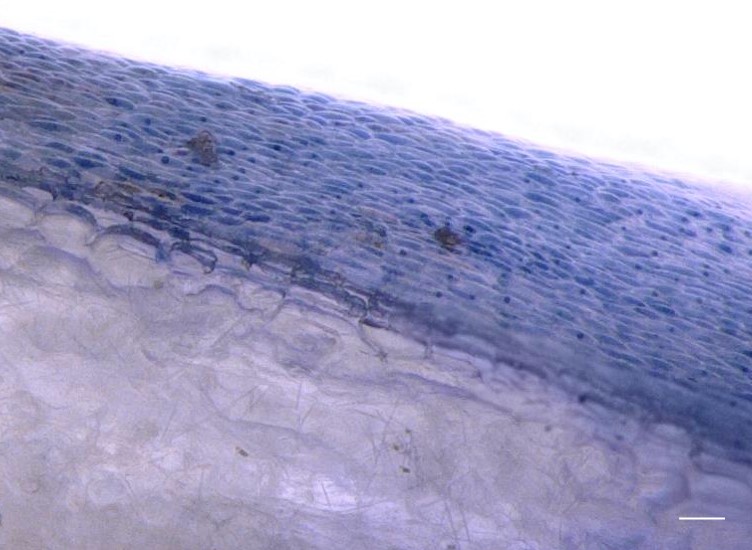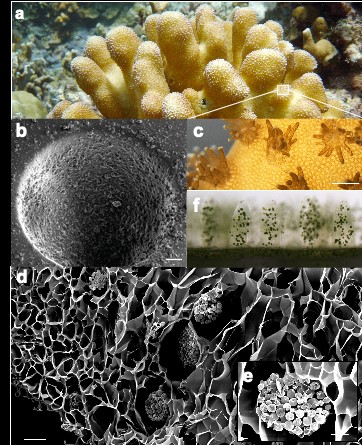Additional to studying light interaction with photonic structures in plants we also study light interaction with other natural structures in plants. Two key areas within this theme we focus on are: anthocyanoplasts and unicellular algae.
Anthocyanin is a plant pigment responsible for red, blue, purple or black colouration of reproductive and vegetative organs of plants, it can be found in all plant tissues. Within plant cells anthocyanin can be found either uniformly distributed or as dense plastids known as anthocyanoplasts or anthocyanin vacuolar inclusions (AVIs). We study light interaction with AVIs and the resulting optical response.

Microscope image of AVIs in epidermal cells. Scale bar = 50mm
Our research involving unicellular algae concentrates on both single cell and whole culture behaviour. At the alga level we are interested in how the cell interacts with light and how we can use the optical response to measure physiological features of the cell. For our work involving whole cultures we are interested in how we can finetune the optical properties of hydrogels to optimise growth rates, using a biomimetic approach to aid light propagation through a culture.

Biomimetic hydrogel designs to optimise algal growth. Stylophora pistilla coral (a), close-up image (c). Bionic skeleton hydrogel, seen here as a cup shape (b), SEM image of bionic tissue and algal aggregates (d), close-up of algal aggregate (e). 7-day old bioprinted hydrogel with aggregates of Marinichlorella kaistiae KAS603 (f). Scale bar = 100mm (b, f), 1mm (c), 20mm (d), 10mm (e).
